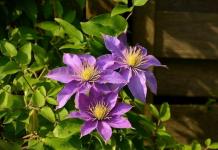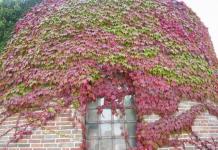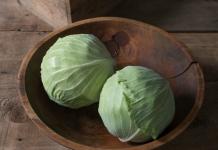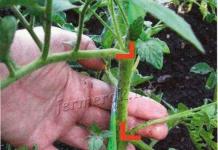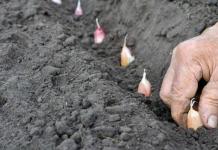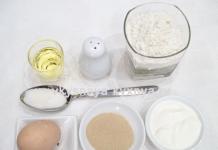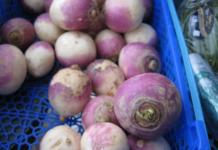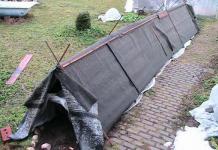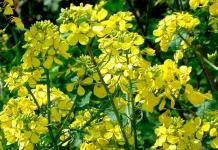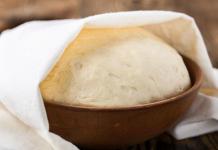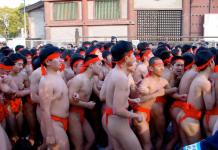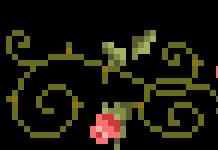Clematis are very beautifully flowering vines that have long been grown by flower growers on their backyards. But novice lovers of various flowering plants also often plant these vines in their garden, decorating the area around the gazebos or a fence. But not everyone knows how to properly care for various types of clematis in the autumn, as well as how to properly prepare them for the coming cold weather - after all, how the flower will increase its vegetative mass and bloom in the next season directly depends on such procedures.
Types and varieties of clematis in the Urals
Herbaceous perennials completely dry the aerial part for the winter. Only the rhizome is preserved.
In winter, semi-shrubs retain only part of the shoots, the top dies off by the end of the growing season. The lower part, where the branches are already lignified, is preserved. This type includes various forms of hogweed and whole-cast clematis.
Shrubs are distinguished by completely lignified branches that winter well. These include clematis shrubby lobed and Gangut.
Vines are fast-growing plants that need support, as their branches are thin and brittle. This large group is popular with gardeners. 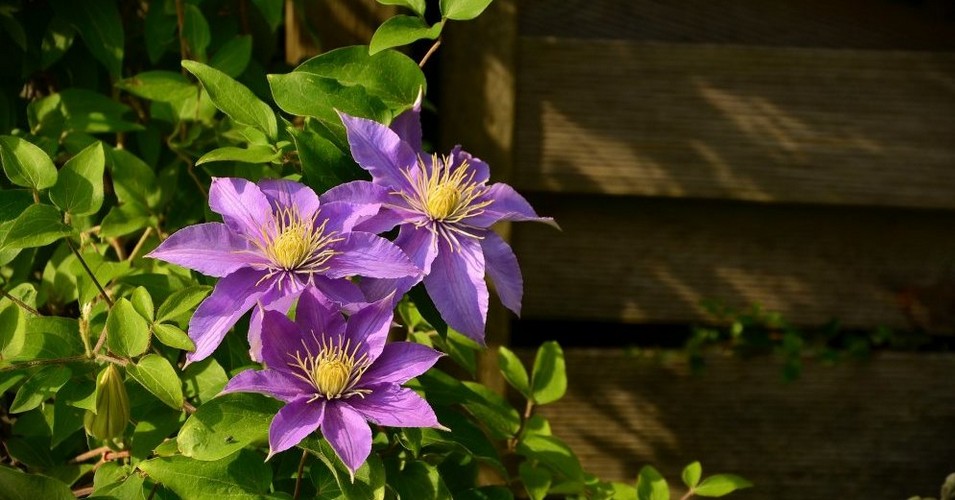
Selection of clematis seedlings for planting in the Urals
The further flowering of the plant, as well as its duration, depends on the planting material.
When purchasing seedlings, you need to consider the following points:
- Healthy planting material has no mechanical damage.
- A developed root system consists of five or more roots.
- An autumn seedling should have several shoots with buds.
- The best time to buy a seedling is mid-September.
- When choosing a seedling, it is better to choose a plant with a closed root system.
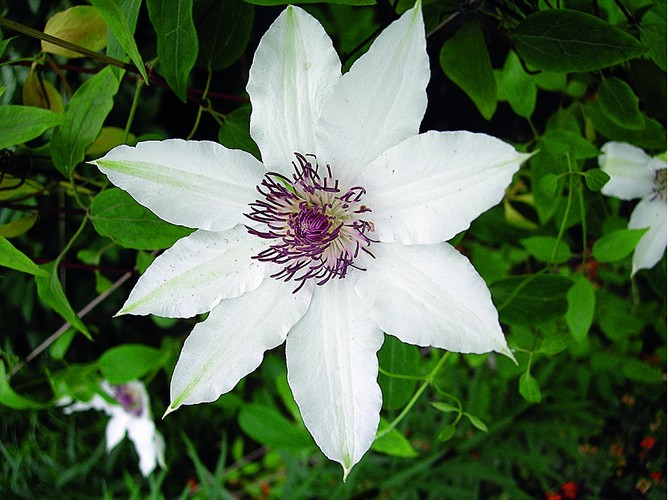 Autumn care for clematis in the Urals
Autumn care for clematis in the Urals
My clematis are developing well. No extra effort is required for this. It is enough to follow simple conditions.
The plant does not tolerate excess water. In the spring I water no more than 1 time a week (0.5 buckets of water per bush), in the summer, in the heat - 2-3 times a week (in the evening). And you can dig in a few pots around the bushes with a hole in the bottom - the water that filled them during watering will slowly penetrate deep into the soil and moisten the layer in which the roots of adult clematis are located, languishing with thirst in the hot summer.
In the first year after planting, I do not fertilize clematis. In subsequent years, I feed it once a month until the first flowers appear. I use either fertilizer from a flower shop, or sprinkle with water in which I soaked raw unsalted meat. Top dressing with Strawberry Concentrate fertilizer showed good results.
In addition, to protect against diseases, I water an adult plant (in April-May) with a solution of chalk with the addition of copper sulfate: 500 g of chalk and 200 g of copper sulfate per 15 liters of water (0.5 buckets of composition per bush). 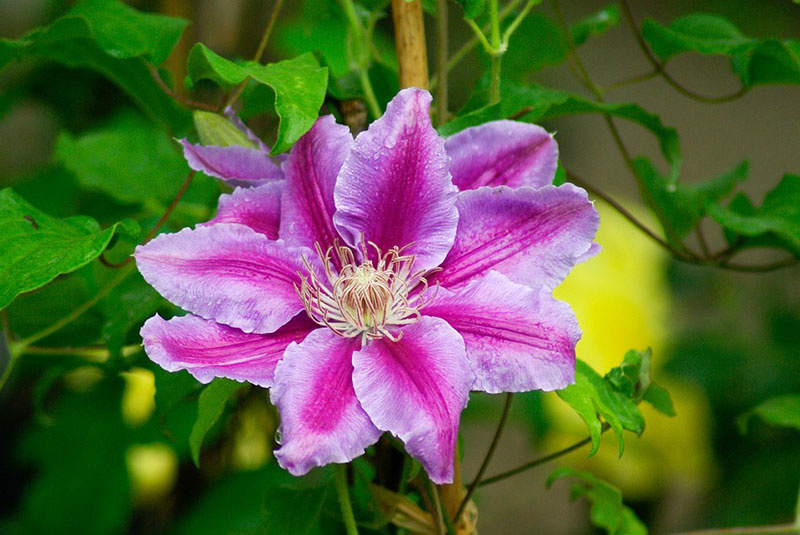
I regularly carefully weed the area with clematis. And the best option is to sow lawn grass in the flower bed. This will also save the roots from the sun and overheating. If you plant marigolds (calendula) at the base of the vine, they will protect the clematis from the nematode.
Watering clematis in the Urals
Clematis is a moisture-loving plant, so it is imperative to provide it with regular and abundant watering. The best option is to water once a week, and in dry times, the number of waterings can be increased to two. About one adult plant should have 20-40 liters of water, and a young one - 10-15 liters.
Fresh articles about garden and vegetable garden
Loosening and mulching of clematis
Without mulch in the near-stem circle, clematis need constant loosening. This is usually done once a week after watering to lighten the soil. At the same time, it is necessary to remove all weeds. To reduce these steps and reduce the number of weeds appearing, the trunk circle can be covered with peat.
Top dressing of clematis in the Urals
The first feeding of this plant is done during planting, when you add compost and superphosphate to the soil, sometimes dolomite flour can be used. In the first years of clematis life, you should not overfeed fertilizers, and in subsequent periods, fertilizing should be regular. During the active growing season of clematis, it is necessary to apply nitrogen fertilizers, which contribute to the growth of foliage. During the formation of buds, it is better to use potash fertilizers, and after flowering, fertilize with phosphorus. Also, in the spring, you can use a solution of dolomite flour to prevent the appearance of diseases. Before the onset of cold weather, feed your clematis with complex mineral fertilizer.
Support and pruning of clematis
It is necessary to create support before planting, since then you can damage the root system. The support can be made independently from wire or thin metal tubes. Alternatively, special supports for these plants can be purchased in stores. These can be arches, pyramids, or fan structures. 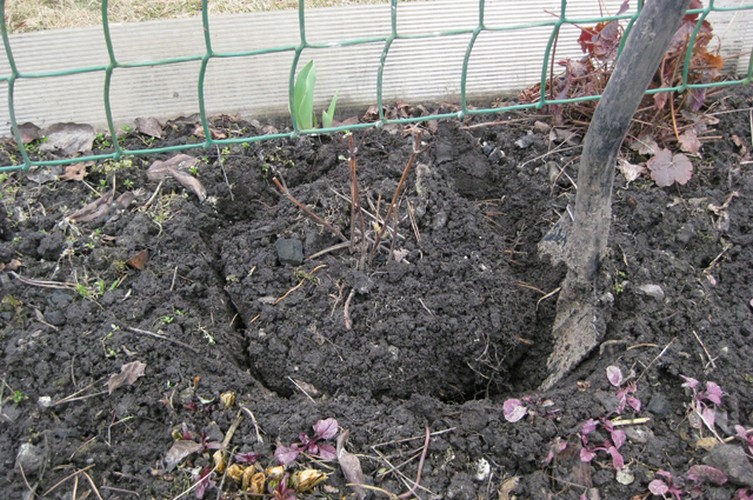
Pruning clematis in the fall
Many growers do not always prune clematis according to the group. There are other types of pruning. 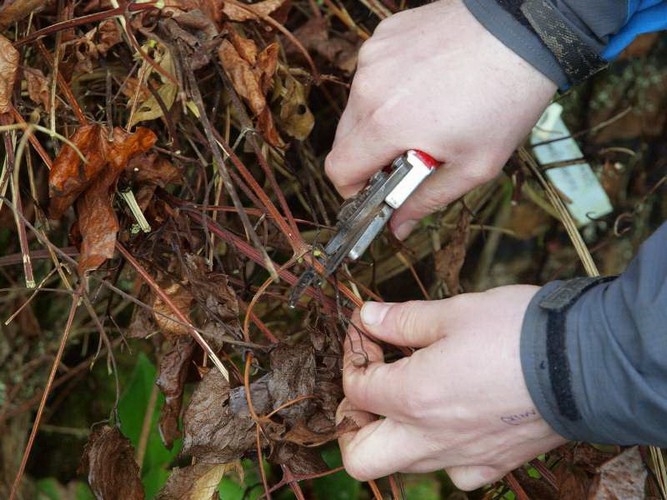
Plants are pruned in the fall in several tiers. The procedure is carried out in this way:
Several shoots (no more than 4) are cut at a height of one meter from the soil.
Several shoots (no more than 4) are cut at a height of half a meter from the soil.
Several shoots (no more than 4) are cut to 2-3 buds from the soil.
The remaining shoots are cut at the root.
Those shoots that remain are carefully laid on the ground and snatched away. As a shelter for the winter, you can use ordinary fallen leaves or dried grass.
Sometimes the plants are cut completely for the winter. It is good enough to mulch such clematis. The mulch layer is about 10-13 centimeters. After such a procedure, boxes are installed on top, which in turn are covered with dried grass, sawdust and peat. And finally, the whole structure is covered with a film. To supply oxygen to the plant, small holes are made on the side. In such a shelter, the wintering of clematis is successful.
Reproduction of clematis in the Urals
Reproduction of clematis is possible in several ways: by seeds and cuttings, dividing the bush and layering. The latter method is popular among amateur gardeners. To get new plants, several narrow grooves are made near the mother liquor, into which the stem shoot must be dug. It will take root underground. So during the season you can get more than a dozen young clematis. Another method, grafting, has proven itself well. Propagation by cuttings is best done in a greenhouse.
Shoots are cut from healthy shrubs at around 3 years of age and planted in bore boxes. Planting is carried out in a light substrate from a mixture of sand and peat. You can add perlite or other baking powder. Rooting occurs in about a month and a half. Caring for cuttings consists of regular watering and spraying. Young clematis can be planted in the ground in spring. The easiest option is to reproduce by dividing the bush. But this method has a significant drawback - a violation of the root system of the mother plant.
Preparing clematis for winter in the Urals
Shelter of clematis for the winter. By autumn, clematis shoots ripen and harden. Therefore, with proper (deep) planting and good care, they hibernate normally even with light cover.
In varieties that form flowers on last year's shoots, it is necessary to maintain summer growth (first pruning group). To get rid of fungal diseases, only the leaves and dead parts of old or diseased vines are removed.
Before the soil freezes, the base of the bush is sprayed with 1% Bordeaux liquid or 2% iron vitriol and sprinkled with sand to a height of 15 cm, to which ash is added (250 g per bucket of sand).
Shoots are sprayed with the same composition and bent down, spruce branches are placed under them and on top.
In areas where winter thaws are possible, dry peat or sawdust is poured on top of the spruce branches and covered with plastic wrap. You can put wooden slats near the bent, rolled-up shoots, and cover them with a film on top.
It is important that there is an air gap. Clematis belonging to the second pruning group are also covered. 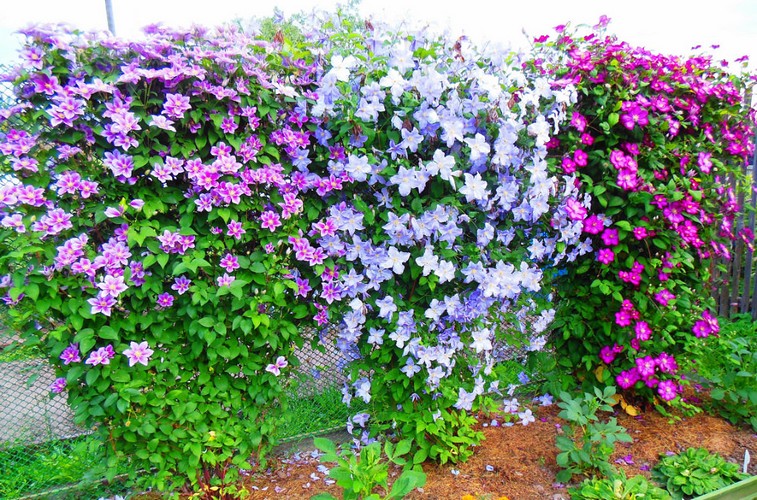
Then it is covered with a layer of 20-25 cm of peat, rotted manure or sawdust (1-2 buckets per plant) and covered with foil. Or they simply fall asleep with sand and ash, and then snow.
With such a shelter under the snow cover, clematis winter well. They can tolerate frosts up to 40 ° C without loss, thaws, which are replaced by a sharp cold snap, are more dangerous for them.
In the spring, the plants are gradually freed from the shelter. First remove the plastic wrap, then the substrate layer. Lapnik, part of the peat (or sand with ash) is left until the danger of night frosts has passed. Then they carefully raise the shoots, evenly distributing them on the supports.
The soil above the center of tillering is carefully leveled, leaving a layer of 5-8 cm.


